Comparing The Different Types of Sliding Doors
Table of Contents
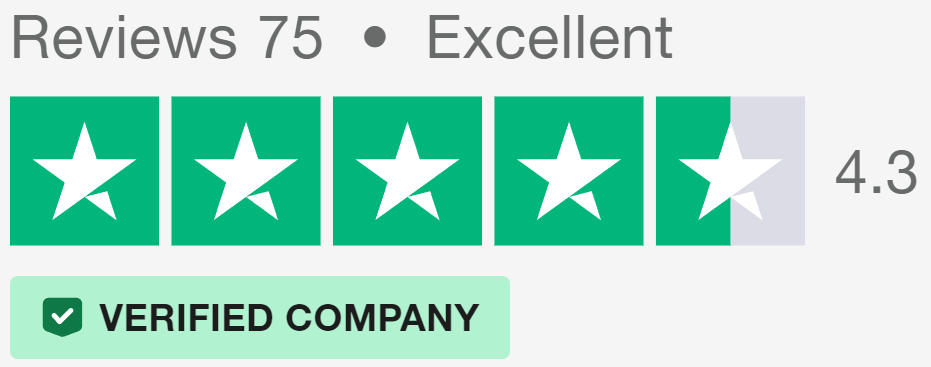
The world of sliding doors is vast and varied, offering solutions for nearly every architectural challenge. As we explore the types of sliding doors on the market, you’ll discover options that range from classic to cutting-edge. Sliding door types have evolved a lot over the past few years, now encompassing everything from pocket doors that disappear into walls to multi-panel systems that open up entire facades. This article will guide you through the different types of sliding doors, whether you’re interested in types of exterior sliding doors for your patio or exploring sliding door types for interior use.
What Makes a Door “Sliding”?
Sliding doors move horizontally along a track, creating large openings without swinging outwards. They’re a popular choice for homes and businesses alike, offering space-saving benefits and smooth operation.
The Basics of Sliding Door Operation
Sliding doors rely on rollers and tracks for movement. The rollers, typically made of nylon or steel, sit at the bottom of the door panel. They glide along a metal track, allowing the door to slide open and closed with minimal effort.
Most sliding door types use a double-track system. One track guides the moving panel, while the other supports the fixed panel. This arrangement allows for a smooth overlap when the door is open.
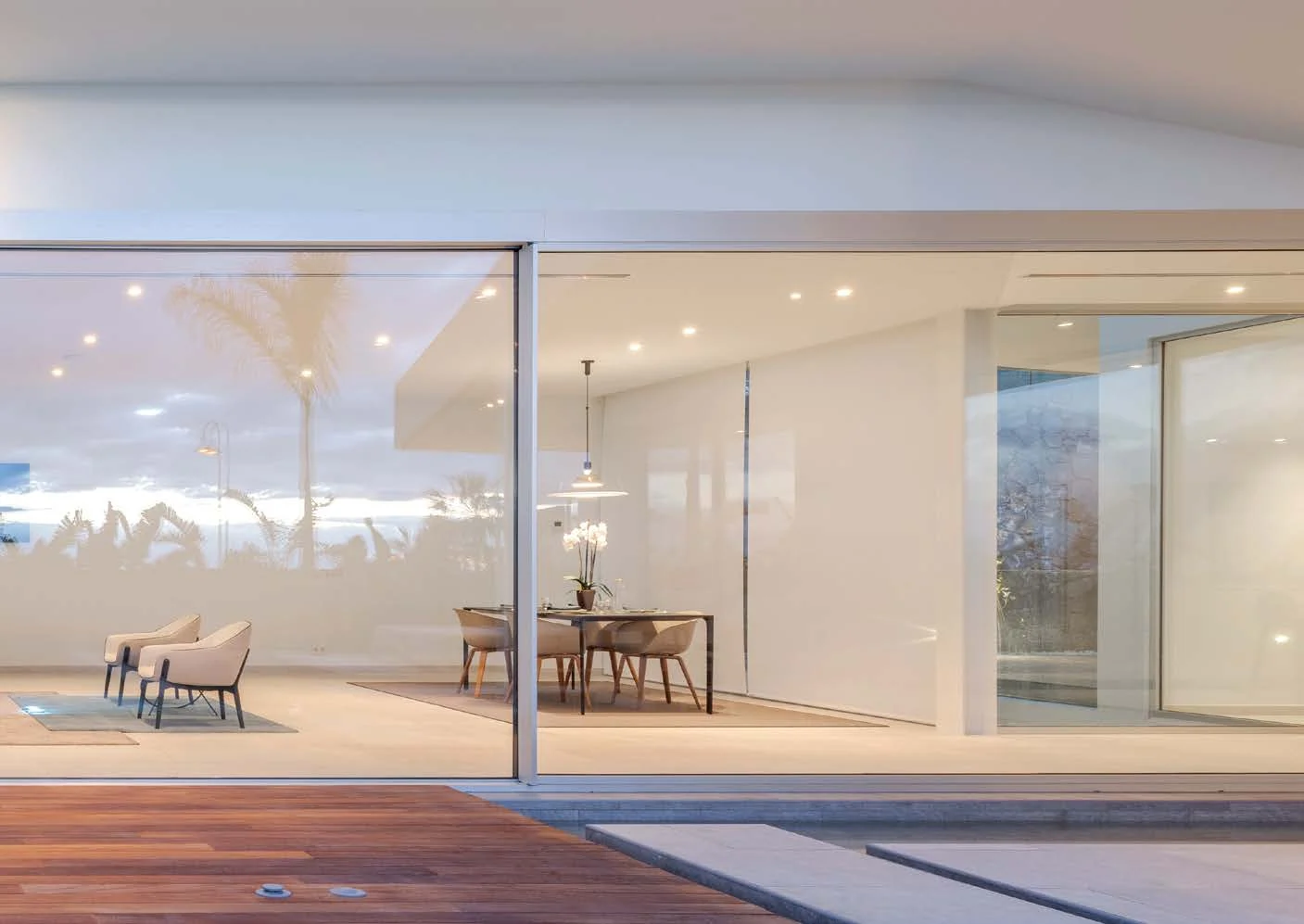
Key Components of Sliding Doors
The frame plays an important role in sliding door operation, providing structure and housing the tracks. Quality frames prevent warping and ensure long-term reliability.
Weather stripping is another essential element. It seals the gaps around the door, keeping out drafts and moisture. Effective weather stripping improves energy efficiency and comfort.
Materials Used in Sliding Doors
Glass is the most common material for the panels of slide doors. It lets in natural light and provides clear views. Tempered glass is sometimes used for safety, as it breaks into small, dull pieces if shattered.
Aluminium frames are lightweight and resistant to corrosion. They’re a good choice for exterior sliding doors, standing up well to the elements. Wood frames offer a traditional look and excellent insulation properties. They require more maintenance but add warmth to interiors.
Vinyl frames are gaining popularity for their durability and low maintenance needs. They resist moisture and don’t need painting. Some homeowners prefer vinyl for its affordability and range of colour options.
Fibreglass is another material worth considering. It’s strong, energy-efficient, and can mimic the look of wood without the upkeep. Fibreglass frames work well in various climates and resist warping or cracking.
Different types of sliding doors often combine materials for optimal performance. For example, you might find doors with aluminium frames and vinyl cladding, offering the strength of metal with the low maintenance of vinyl.
Popular Types of Sliding Doors
Classic Sliding Patio Doors
Patio sliders are perhaps the most recognisable of all types of sliding doors. These doors typically feature large glass panels that slide horizontally along a track. They’re a popular choice for connecting indoor living spaces with outdoor areas, providing easy access to gardens or balconies.
Most patio sliders consist of two panels, with one fixed and one mobile. However, you’ll also find configurations with multiple panels, allowing for wider openings. The frames of these doors are often made of aluminium or uPVC, materials chosen for their durability and low maintenance requirements.
One of the main advantages of sliding patio doors is their ability to let in ample natural light. They also offer unobstructed views when closed, making rooms feel more spacious. For those concerned about energy efficiency, many modern patio sliders come with double or triple glazing options.
Pocket Doors
These doors slide into a compartment in the adjacent wall when opened, effectively disappearing from view. They’re an excellent solution for areas where space is at a premium, as they don’t require any swing room.
Installing pocket doors often requires some structural work, as the wall needs to be hollow to accommodate the door. However, the space-saving benefits can be substantial, particularly in smaller homes or apartments. Pocket doors are commonly used for bathrooms, closets, or as room dividers in open-plan layouts.
While traditionally associated with interior spaces, some homeowners are now exploring types of exterior sliding doors that use pocket door mechanisms. These can be particularly effective for creating large, unobstructed openings to outdoor areas.
Barn-Style Sliders
Barn-style sliding doors have gained popularity in recent years, particularly in homes aiming for a rustic or industrial aesthetic. Unlike other types of sliding glass doors, barn doors typically hang from a track mounted above the doorway and slide along the wall’s surface.
These doors can be made from various materials, with wood being a popular choice for its authentic barn-door look. However, you’ll also find metal and glass options that offer a more modern twist on the style. Barn doors are often used as statement pieces, adding character to interior spaces.
One advantage of barn-style sliders is their relatively easy installation. They don’t require the structural modifications that pocket doors do, making them a simpler retrofit option. However, it’s worth noting that they don’t provide the same level of privacy or sound insulation as traditional swing doors or pocket doors.
Framed vs Frameless Sliding Doors
When exploring types of sliding doors, the choice between framed and frameless designs is a key decision. Both options offer distinct advantages and can dramatically influence the look and feel of your space.
Framed Sliding Doors
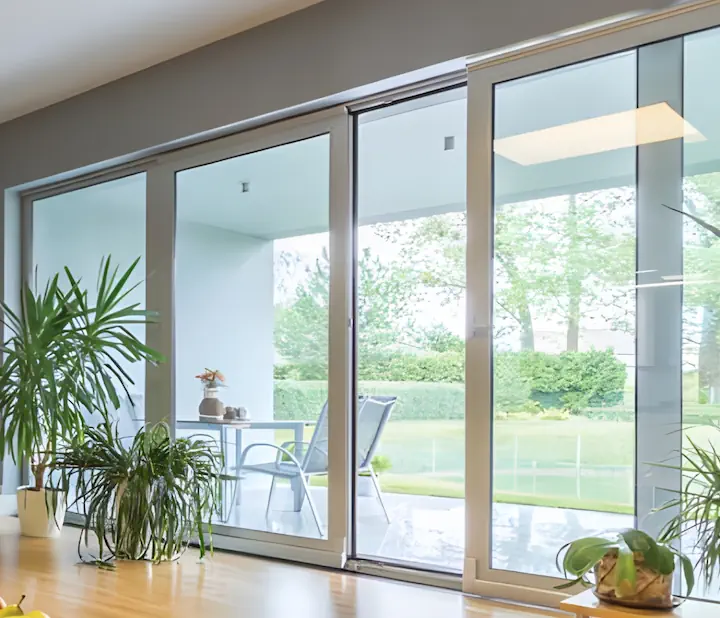
Framed sliding doors are a classic choice among the various types of sliding doors. They feature a visible frame around the glass panels, typically made of materials like aluminium, wood, or uPVC. These frames provide structural support and house the door’s sliding mechanism.
One of the main benefits of framed sliding doors is their robustness. The frame adds strength to the overall structure, making these doors a reliable choice for exterior applications. They’re particularly well-suited for larger openings where additional support is necessary.
Framed sliding doors also offer excellent insulation properties. The frame creates a tight seal when closed, helping to maintain indoor temperatures and reduce energy costs.
In terms of aesthetics, framed sliding doors can complement a wide range of architectural styles. From sleek, modern aluminium frames to warm, traditional wooden ones, there’s a framed option to suit most tastes. Some homeowners appreciate the defined lines that frames create, using them as a design element to add visual interest to a space.
Frameless Glass Sliders
At the other end of the spectrum are frameless glass sliders. These minimalist sliding door types feature large panes of glass with minimal visible hardware, creating an almost invisible barrier when closed.
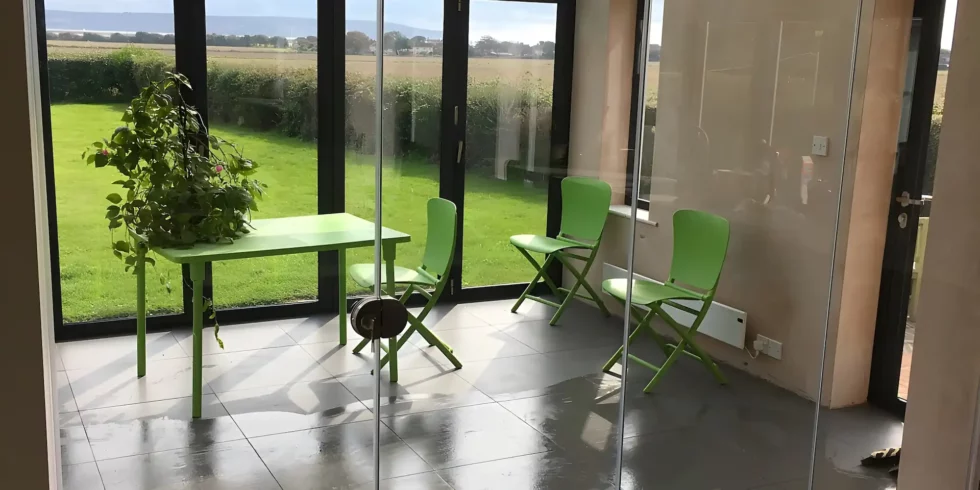 Frameless slide and stack doors
Frameless slide and stack doors
Frameless designs are gaining popularity among those seeking a contemporary, unobstructed look. They’re particularly favoured in modern architecture where clean lines and open spaces are prized. Of all the types of sliding doors, frameless options perhaps offer the most unimpeded views and light transmission.
Installation of frameless sliding doors often requires specialised skills and materials. The glass used must be tempered and thick enough to provide stability without the support of a frame. Despite this, many find the results worth the extra effort and cost.
It’s worth noting that while frameless doors are often associated with exterior applications, they’re also making waves as internal sliding doors. In office settings, for example, they can create private meeting spaces without compromising on the open-plan feel.
Hybrid Options
Some manufacturers are now offering hybrid types of sliding doors that combine elements of both framed and frameless designs. These doors might feature minimal framing or use clear materials for the frame to create a nearly frameless appearance while retaining some of the structural benefits of framed doors.
Hybrid sliding door types can be an excellent compromise for those torn between the sleek look of frameless doors and the practical benefits of framed options. They’re particularly useful in situations where building regulations require some form of framing, but the aesthetic goal is for a frameless appearance.
When choosing between framed, frameless, or hybrid types of sliding glass doors, consider factors like your local climate, the door’s intended use, and your overall design vision. Each option has its strengths, and the right choice will depend on your specific needs and preferences.
Innovative Sliding Door Mechanisms
As technology advances, so do the mechanisms behind sliding doors. These innovations have expanded the range of sliding door types available, offering improved functionality and unique design possibilities.
Lift and Slide Doors
Unlike traditional types of sliding doors, lift and slide doors are equipped with a mechanism that slightly lifts the door off its track when the handle is turned. This lifting action reduces friction, allowing for smooth operation even with very large and heavy door panels.
The ease of use is a major selling point for lift and slide doors. Despite their size, they can be opened and closed with minimal effort. When closed, the door settles back down onto the track, creating a tight seal. This makes lift and slide mechanisms particularly popular for types of exterior sliding doors, where weather-tightness is important.
Some homeowners find that lift and slide doors offer the best of both worlds: the large opening of sliding doors combined with the sealing properties of traditional swing doors. They’re an excellent choice for those who want to create wide openings without compromising on insulation or security.
Corner Sliding Doors
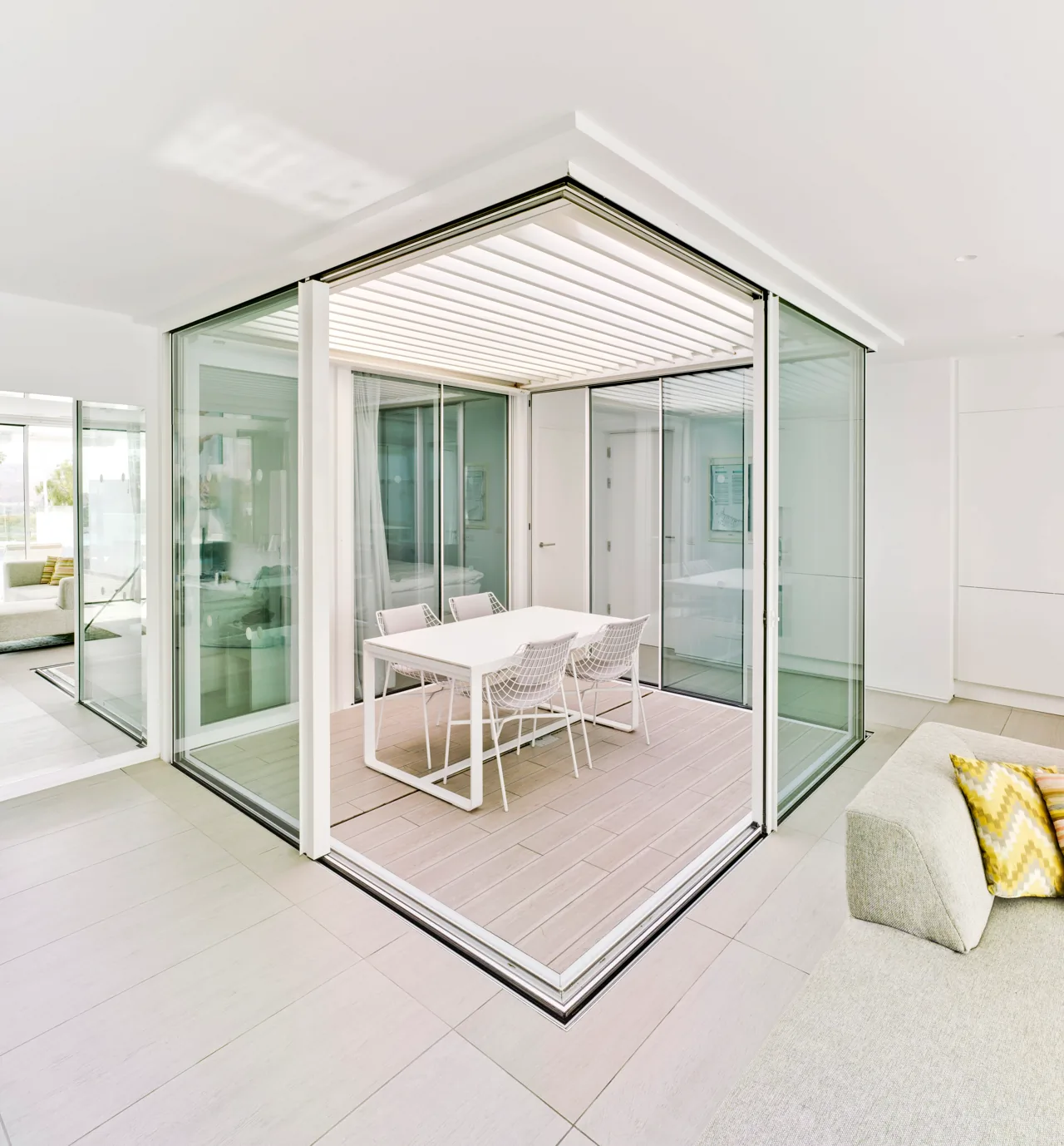
Corner sliding doors are a striking option; these innovative designs allow two sets of sliding doors to meet at a corner, opening up two walls at once. When open, they create a dramatic effect, seemingly making the corner of the room disappear.
This type of door is particularly popular in modern homes and extensions, where they can blur the line between indoor and outdoor spaces. They’re often used to open up living areas to patios or gardens, creating a fluid space for entertaining or relaxing.
Installing corner sliding doors can require careful planning and precise engineering, especially for designs without a supporting post where the doors meet (open corner sliding doors, pictured). The supporting structure needs to be designed to handle the load when the doors are open, as there’s no corner post to provide support. Despite these challenges, many find the stunning visual impact worth the extra effort.
While often seen as types of exterior sliding doors, corner sliders are also making their way into interior design. They can be used to create flexible living spaces, allowing rooms to be opened up or closed off as needed.
Slide and Stack Doors
Slide and stack doors, also known as slide and swing doors, slide and pivot, or slide and turn, represent a highly adaptable category among the different types of sliding doors. These systems offer a unique blend of functionality and style, making them increasingly popular in both residential and commercial settings.
How Slide and Stack Doors Work
Unlike traditional types of sliding doors that move along a single plane, slide and stack doors combine sliding and pivoting motions. Each panel slides along a track, then pivots to stack perpendicular to the opening. This ingenious mechanism allows for a wide range of configurations and opening sizes.
The operation is surprisingly straightforward. Users can slide and pivot each panel individually, providing control over the size of the opening. This flexibility is a key selling point for slide and stack systems.
Configurations and Panel Options
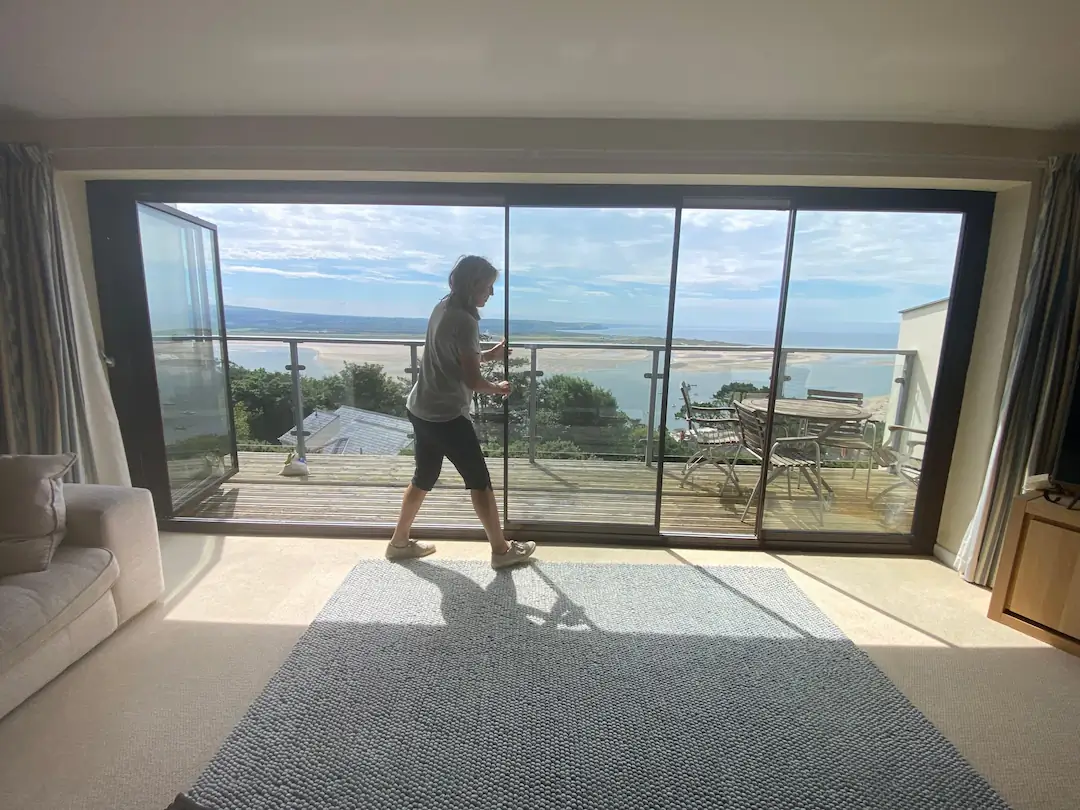
Slide and stack doors offer numerous configuration possibilities. They can be designed to open from one end, both ends, or even from the centre. The number of panels can vary too, from as few as three to as many as needed to cover large openings.
When it comes to materials, slide and stack doors are available in various options. Glass is a popular choice, especially for types of exterior sliding doors, as it maintains views and lets in natural light. However, you’ll also find solid panel options, which can be useful for types of internal sliding doors where privacy is a concern.
Frame materials typically include aluminium, timber, or uPVC. Each material has its own advantages in terms of durability, insulation, and aesthetics. The choice often depends on the specific application and the overall design scheme of the space.
Indoor-Outdoor Living with Slide and Stack
One of the main advantages of slide and stack doors is their ability to create expansive openings. When fully open, they can almost entirely eliminate the barrier between indoor and outdoor spaces. This makes them particularly well-suited for homes with patios, decks, or gardens.
During warmer months, homeowners can fully open their slide and stack sliding patio doors to extend their living space outdoors. In cooler weather, the doors can be partially opened for ventilation while still providing protection from the elements. This flexibility allows for year-round enjoyment of outdoor views and fresh air.
Slide and Stack vs Traditional Sliders
While both are types of sliding doors, slide and stack systems offer several advantages over traditional sliding doors. The ability to stack panels perpendicular to the opening means that, when fully open, slide and stack doors take up less space along the wall than conventional sliders.
Also, slide and stack doors can open up a larger portion of the wall. Traditional sliding doors typically only allow half of the opening to be cleared, as one panel slides behind the other. In contrast, slide and stack doors can clear almost the entire opening.
However, it’s worth noting that slide and stack sliding patio doors generally tend to be more complex in terms of hardware and installation. These factors should be considered when choosing between different types of sliding doors for a specific application.
Sliding Doors for Different Spaces
Sliding doors are not a one-size-fits-all solution. Different spaces and purposes call for various kinds of doors. Understanding how these doors can be applied in different contexts can help you make the best choice for your specific needs.
Interior Applications
The various types of internal sliding doors offer numerous benefits for residential and commercial interiors. They’re particularly useful in spaces where swing doors would take up too much room. In smaller homes or apartments, sliding doors can be a space-saving miracle, allowing for more efficient use of limited square footage.
For example, pocket doors are excellent for bathrooms or walk-in closets. They slide into the wall cavity when open, leaving the entire doorway clear. This can be especially helpful in ensuring accessibility for those with mobility issues.
Room dividers are another common application for interior sliding doors. Large, glass sliding panels can separate living areas while maintaining an open feel. When closed, they provide privacy and noise reduction; when open, they allow for a more spacious, flowing layout.
Exterior Solutions
When it comes to types of exterior sliding doors, the options are equally diverse. Sliding patio doors are perhaps the most common application, connecting indoor living spaces with outdoor areas. These can range from simple two-panel sliders to more complex multi-panel systems.
For those looking to maximise their connection to the outdoors, sliding door types like lift-and-slide or slide-and-stack systems can create impressively wide openings. These doors can span entire walls, effectively blurring the line between indoors and outdoors when open.
Sliding doors are also popular for balconies in apartment buildings. They provide easy access to outdoor space without the swing clearance required by traditional doors. This allows for more usable space on often-cramped balconies.
In regions with mild climates, sliding screen doors are a common addition to exterior doorways. These allow for ventilation while keeping insects out, making them a practical choice for many homeowners.
Commercial Uses
In commercial settings, sliding doors serve both functional and aesthetic purposes. Retail stores often use large glass sliding doors as entryways, creating an inviting storefront that’s easy for customers to navigate.
Restaurants and cafes frequently employ types of sliding doors that can open up entire walls, creating al fresco dining areas in good weather. This flexibility can hugely increase seating capacity and create an appealing ambiance for diners.
In warehouses and industrial settings, large sliding doors are often used for easy access for vehicles and equipment. These doors can be manually operated or motorised, depending on their size and frequency of use.
Hotels and conference centres might use large, operable wall systems – a type of sliding door on a grand scale – to divide large spaces into smaller rooms as needed. These systems provide the flexibility to host events of various sizes in the same space.
Frequently Asked Questions
How do I choose between the various types of sliding doors?
When selecting from the different types of sliding doors, consider your specific needs and space constraints. Think about factors like the size of the opening, desired level of insulation, and your overall design aesthetic. For example, if you’re looking to maximise space in a small room, pocket doors might be ideal. For large openings connecting to outdoor areas, multi-panel sliding systems could be the best choice. Consider consulting with a door specialist to help you navigate the options.
How do I choose the right sliding door for my home?
When selecting sliding doors, consider factors like available space, desired functionality, and your home’s architectural style. For a contemporary look, modern sliding doors often feature sleek lines and minimalist designs. Think about the door’s purpose – whether it’s to connect indoor and outdoor spaces, serve as a room divider, or provide access to a closet. Also, factor in your climate and energy efficiency needs when making your choice.
What are the benefits of using sliding doors in a living room?
Sliding doors in living rooms offer several advantages. They can create a strong visual connection with outdoor spaces, bringing in more natural light and expanding the perceived size of the room. Sliding living room doors also save space compared to traditional swing doors, making them ideal for compact homes or apartments. They can act as flexible room dividers, allowing you to open up the space for entertaining or close it off for privacy when needed.
Are sliding doors suitable for office environments?
Absolutely. Sliding doors are increasingly popular in office settings due to their space-saving properties and aesthetic appeal. They’re particularly useful in creating flexible workspaces that can be easily reconfigured. For a modern, professional look, many offices opt for glass office dividers that slide. These allow natural light to flow through the space while still providing sound insulation and privacy when needed.
What are the most common types of sliding doors?
The different types of sliding doors include classic patio sliders, pocket doors, barn-style sliders, and multi-panel systems. Each type has its own unique features and benefits. Patio sliders are popular for connecting indoor and outdoor spaces, while pocket doors are great space-savers for bathrooms or closets. Barn-style sliders add a rustic touch to interiors, and multi-panel systems can create expansive openings for large spaces.
Our Range of Sliding Glass Doors
Vision Glass Doors is a designer, manufacturer, and installer of premium door systems. We are a family run business with over 20 years’ experience and 5,000 installations across the UK.
All our systems are made to measure, designed, and fabricated at our manufacturing facility in Luton, Bedfordshire. We offer installation within a 100-mile radius.
Our leading range of door systems include Ultra Slim – Slide and Turn Doors, Slimline Sliding Patio Doors and Frameless Glass Doors. Suitable for various internal and external applications, they are applicable to residential and commercial projects.
Click Quick Quote Online for a free quotation within 24 hours. Alternatively, call or email us on 01582 492730 or at info@visionglassdoors.co.uk.

